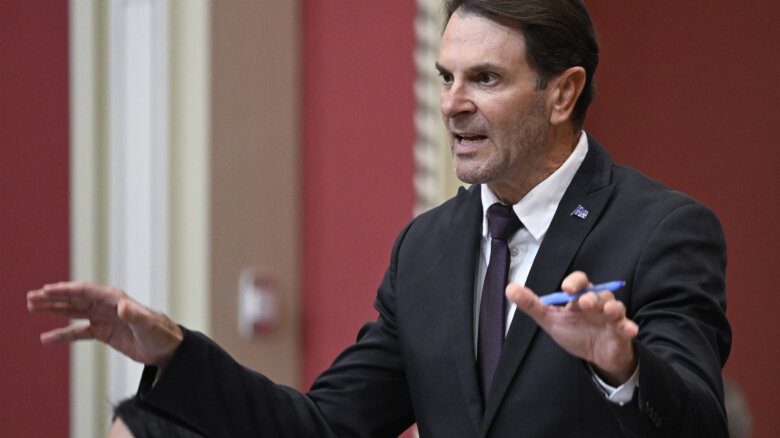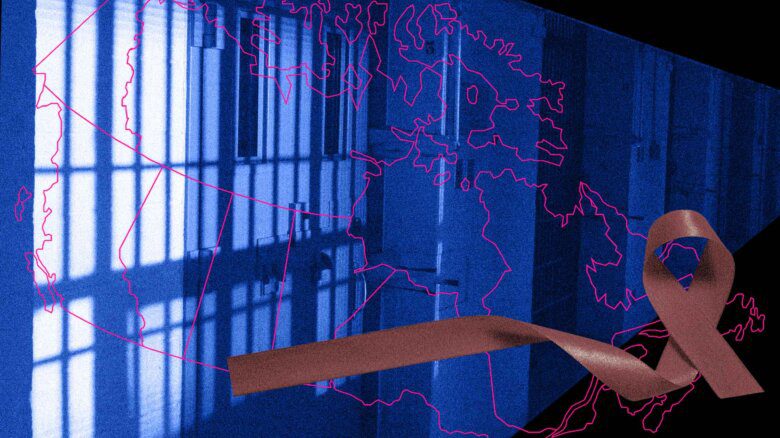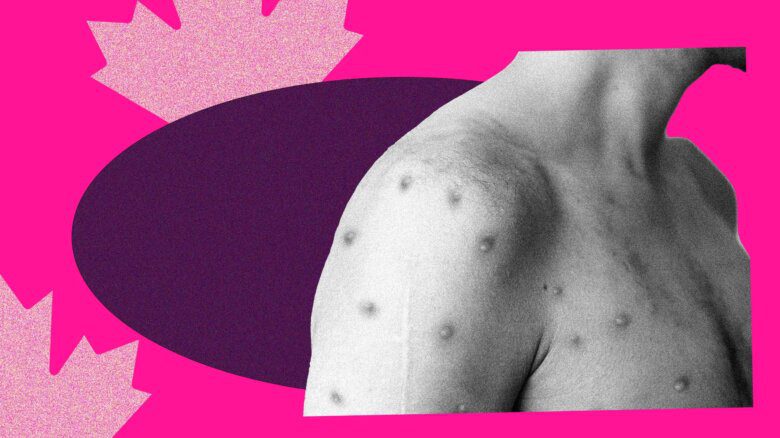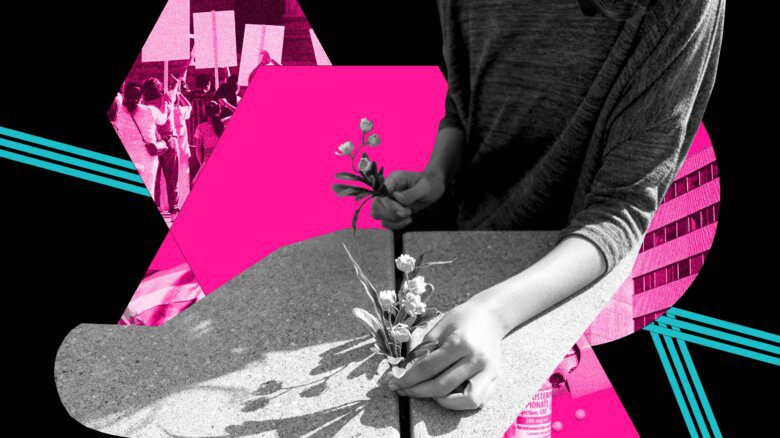Before the It Gets Better project, artist-in-residence Spencer J Harrison gave students at George Vanier Secondary School in Toronto a welcoming open door to talk freely and openly about being gay, lesbian or trans.
Over the past year, Harrison, who had been using a donated studio in the school, has been creating a space where more than 50 students have felt safe enough to come out to him. Before he arrived at the school in October 2009, not a single student in the population of about 900 was openly gay, he says.
To accomplish such a feat, he’s got a trick up his sleeve that helps break the ice: a big bowl of apples that sits near the open door.
Every morning he opens the studio door and shoves a wedge underneath so students can see him working, he says, pointing to his enormous easel propped up against one of the walls.
Throughout the day, students pass by his studio, grab an apple and stay a while.
“They can pick up an apple, have a conversation, and that way other students don’t think they are doing anything other than coming in to pick up an apple,” Harrison says, a professor at the Ontario College of Art and Design. “It’s a pretty great tool to help students open up.”
Harrison calls the school a “high-end art school,” so many will go on to study art at the university level. He’s not a teacher, but he’s in the studio working all the time. He looks at students’ portfolios and gives them feedback, one artist to another.
Not all the talk is on gay issues, nor is it all about art. “Human rights get talked about a lot in here,” he says.
And instead of telling them that life will get better after high school, he shows them. The students see a gay working artist who is using his work to create a dialogue with young people. The visibility is key, he says.
“I’ve had students who once used the word ‘fag’ to describe me and now would never think to use such a word,” he says. “I’m a real gay person living and breathing right in front of them, and for many it’s the only exposure that they get to a queer person. At lunch sometimes, this place feels like a cafeteria, with 15 kids here having lunch, talking.”
On an average day, about 20 students visit him. At his most busy, Harrison’s studio could be visited by 60 to 100 students a day. For them he’s a positive role model.
Harrison has been using the space to create his PhD dissertation for the University of Toronto’s adult education and community development program, making him the first Canadian ever to submit a painted dissertation. The piece is a towering circus tent with a storyboard painted on the inside walls detailing his life history from ages three to 15, ending when he first met another gay person and knew he wasn’t alone in the world.
“It’s important for the students to see an artist start a project and see it through to completion,” he says. “The students come back week after week to peek in and see the process. They see it live in front of them. It’s been really positive.”
About 900 students and parents came to have a look at the finished piece, which stands 19” in diameter with 5’8″ high walls at his November exhibition, called Freak Show. The name is a direct reference to Ringling Brothers’ circus, or “Greatest Show on Earth” freak shows, he says. It’s also what kids called him in high school, a “freak show.”
“I want to talk about perception, how I’m perceived as being a freak because I’m gay,” he says.
“When I do anti-homophobia educational work, I’m asked lots of questions about molesting kids. I’m asked questions about wearing women’s clothing. So I want to talk about that ‘freak show’ way I’m viewed.”
It started when he approached the school, knowing the project he planned to create. He isn’t paid, but he gets use of the very spacious studio in the school. The project finishes at the end of this school year.
Next he plans to travel the tent across the country. Inside the tent, he says, he’ll teach storytelling workshops and hear from gay, lesbian and trans youth, stories he plans to turn into a public archive online.
Growing up in Peterborough, Ontario, Harrison, 48, says he can relate to the challenges kids have talking to their friends, teachers and family about being gay.
“The same issues are discussed today as were discussed when I was in high school,” he says. “I grew up in rural Ontario. The internet didn’t exist. There were no queer people on TV, no queer magazines. Nothing.”
The school is very multicultural, so some students have come to Canada from countries where gay people are still criminalized or killed, he says.
“I’m sanctioned to be in this school doing this work, which is very confusing for many of the students here,” he says. “I see them trying to work through the cultural and religious beliefs in comparison to the board of education and the principal’s position. It’s confusing. But that’s where the great conversations take place.”
“Legally they know same-sex marriage is legal, but that doesn’t mean gay and lesbian kids feel like they can come out and feel like they are safe because all this stuff is still going on. Intimidation, bullying. And that’s all wrapped around myths that have nothing to do with who we are as people. My visibility, just being here, really challenges that.”
 Why you can trust Xtra
Why you can trust Xtra


